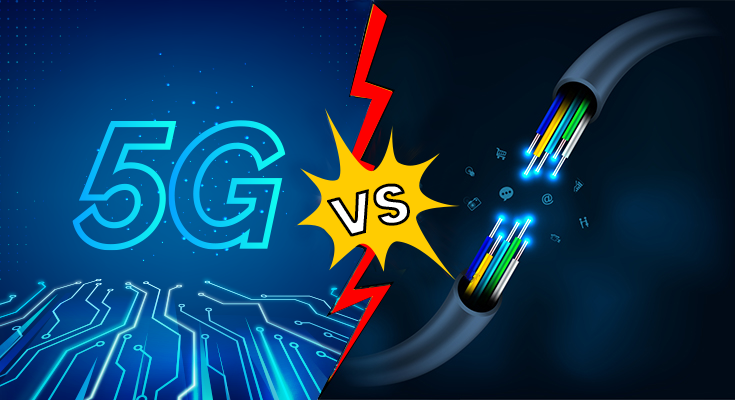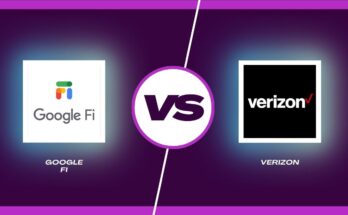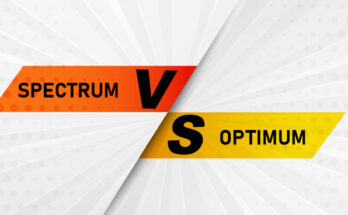With the advancement in technology, users are demanding faster network connectivity to the Internet. In the early days, connection with the World Wide Web was established through traditional copper cables. It proved expensive, but the copper channels also lacked efficiency and caused data loss. Later, it was replaced by optical fibers, which are used to date in comparison to 5g internet faster than fiber.
On the other hand, 2G and 3G were the most dominant cellular network generations till 2013. But they had several drawbacks, due to which a 4G network replaced them. In 2019 however, the 5G network was introduced for cellular users, and both these generations are now defining communication networks in a parallel manner.
Many people quickly get confused, and the question is 5G Internet faster than fiber. Since there are several contradictions in the answer, we have created a brief explaining specific facts with which you can easily decide which network is faster to connect with the World Wide Web.
What is fiber communication, and how does it work?
Fiber communication happens via optical fiber cables that are further connected to an optical transmitter and receiver. The electric signals are first converted to infrared light signals and travel through optical fibers without suffering much loss or impositions of disturbances and noise signals. When the optical receiver receives it, the light pulses are transferred back to the electrical signal and decoded, for they should achieve the information.
While they have been in use for several years now, the concept of optical fiber communication is still new. As data is transferred in light pulses, the speed is very high, so optical fibers have now replaced traditional copper fibers in terms of Internet connections. Developments and upgrades are happening almost daily to ensure the communication speed can be improved without impacting the transfer quality, delays, latency, and security.
Benefits of fiber channels for Internet
- According to the latest reports, the communication speed within fiber optical channels is approximately 1 GBPS. It is so fast that a two-hour movie can only be downloaded within 40 seconds. This particular factor is considered one of the primary key points to answer the question of is 5G Internet faster than fiber.
- Fiber optics Internet can handle more users to connect to the Internet without suffering from high traffic, low Internet speed, and latency.
- The earlier communication channels usually had to suffer from throttle when there was heavy traffic. It not only impacted the activities but also caused data loss. This is why fiber optics are used more nowadays: they do not have any overloading hassle and prevent the throttle from affecting the network speed.
- In the earlier generations of network communication, the upload time was very large than the download time. But with fiber communication, service providers have been able to mitigate this problem because the optical fibers allow both uploading and downloading at the same speed.
- One of the best reasons fiber optical communication has skyrocketed is its ability to transfer data packets smoothly and consistently over time between the transmitter and receiver. Therefore, a person who wants to continuously use the Internet for hours to get the job done won’t complain about latency and delays.
- Fiber optics also offer secured communication channels to the users, ensuring the data transfer remains safe throughout.
Drawbacks of the fiber internet
- The cost of installing fiber optic cables is very high and unsuitable for individuals.
- Not everyone has access to fiber optical channels for communication, especially in the metropolitan region.
- Governments and national broadband companies are yet to take a stand for fiber optics.
What is 5G communication, and how does it work?
In 2019, the 5th generation of the wireless network was introduced to the masses, also known as 5G. It is said to be the fastest communication channel so far. Ensuring data can be transferred within seconds than what used to happen for 3G and 4G networks.
Several small cell stations are located in areas like roofs, lighthouses, long poles, etc. They ensure the transmitted waves are within a millimeter spectrum, with a frequency of 30 GHz to 300 GHz. Since the distance between the cell stations is small, the 5G network established doesn’t suffer from latency or physical obstruction.
Had it been for the long-distance communication networks of 4G. The service providers won’t have been able to implement the 5G spectrum. Recently, a new approach has been adopted where all three band frequencies, low, high, and medium, will be combined to establish the connection channels. This is because each frequency band limits the distance they can travel.
For example, low band frequencies can cover more considerable distances while high band frequencies are meant for smaller spaces. Therefore, the coverage will increase with the implementation of all three frequencies within the 5G network.
Benefits of 5G communication network
- The speed of the 5G communication channel is way more than what 4G used to offer. It can transfer data 20 times faster than the 4G LTE channel.
- A significant advantage of the 5G communication channel is its highly scalable bandwidth. It can handle many users without having to suffer from traffic problems.
- The time gap between data sent and received is shallow in the 5G network. Thanks to its low latency, this communication channel will soon take over 4G LTE entirely in the coming few years.
- Another significant benefit of the 5G communication channel is its less energy consumption. When you are using your phone to access the network, the battery won’t lose much charge as it used to do with the 4G network.
Drawbacks of 5G communication network
- Incorporating a 5G network in urban areas is very difficult because of the short-distance cell sites which should be there to establish the communication channels.
- The 5G signals are impacted by geographical obstructions like buildings, mountains, bridges, etc.
- The 5G Internet faster network is still in the development phase, and not many countries have implemented it. People are yet to know what 5G is in reality, let alone use it.
Conclusion
Now that you have got your answer for 5G Internet faster than fiber. The responsibility of choosing the best network will fall on your shoulders. While doing so, you must consider the differences in speed, latency, security, and cost setup. The feasible network in most factors should be the one for you.




